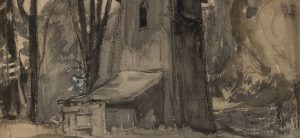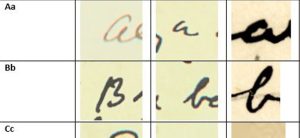As trends and technology change, many once common household objects have fallen into obscurity. As a result, museums sometimes have difficulty identifying artifacts or their original use. This item is a fitting example of one of these household objects. The modern dressing table or bathroom generally includes several household and hygiene products such as combs, toothbrushes, and makeup containers. During the Victorian era, one object that was once grouped with these items was known as a hair receiver.
Collection of the Hardy-Payne family.
This hair receiver was hand-painted by Phoebe Watson, who gifted it to her niece for her wedding. It was paired with a dressing table tray, powder shaker, and a cosmetic container. Sets like this one can reveal information about the beauty routines of the past.
The purpose of the hair receiver was to collect the hair that became tangled in brushes and combs. This hair could then be recycled in many ways. The hair could be used as stuffing for pincushions, decorative pillows, and even placed back on the head to add “lift” to tall and puffy hairstyles.
Homer, Roxa, and Anna Watson. 1917. HWHG Permanent Collection.
Before hair spray, recycled hair could be used to add volume to hairstyles.
Despite the fact the Victorian era saw many forms of hair-art, such as hair wreaths and hair jewelry, this hair would have been too tangled to braid or weave. Hair used in hair-art had to be cut directly from the head instead of brushed out. Hair, especially during this time, was ascribed many kinds of symbolism. While hair-art was most often used as a memento mori, the hair receiver was connected to the idea that hair was an indicator of wealth, power, and vitality.
Though they are often associated with the Victorians, hair receivers were used as late as the 1950s. While hair still has many of the symbolic qualities it had in the past, the usage of recycled hair in beauty and crafts has declined in popularity. Despite this decline, hair still gets reused in many ways today – in the creation of wigs, hair mops for cleaning oil spills, and in the case of the 2016 Fort McMurray wildfire, an Ottawa-based salon used hair clippings to stuff beds for affected pets.
Although the hair receiver may feel like a strange item forgotten by time, it sheds light on past practices of recycling and symbolism, some of which carry on into the present day.



















